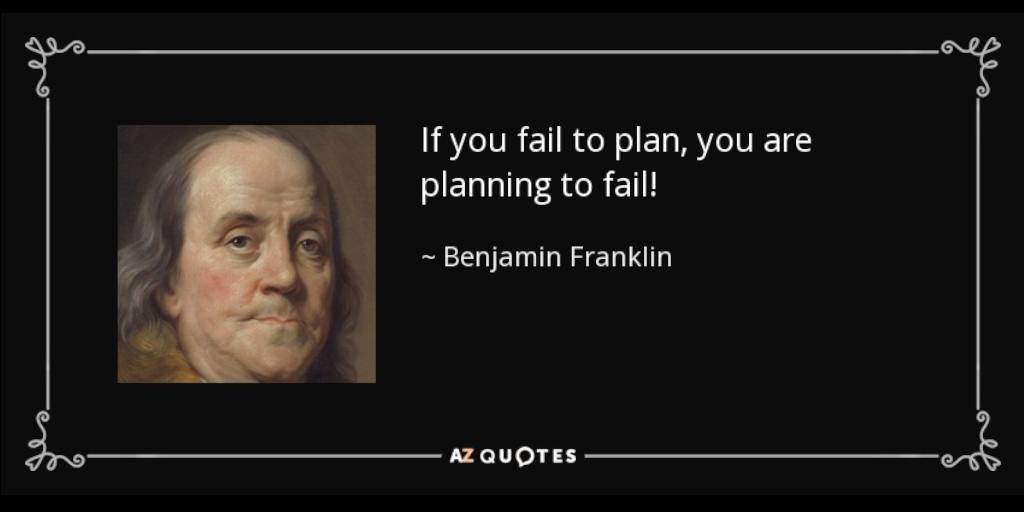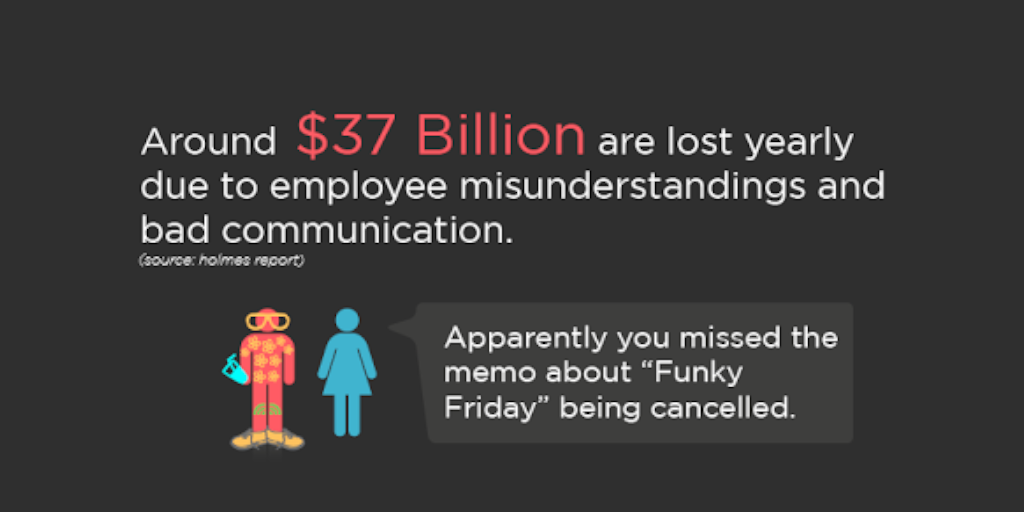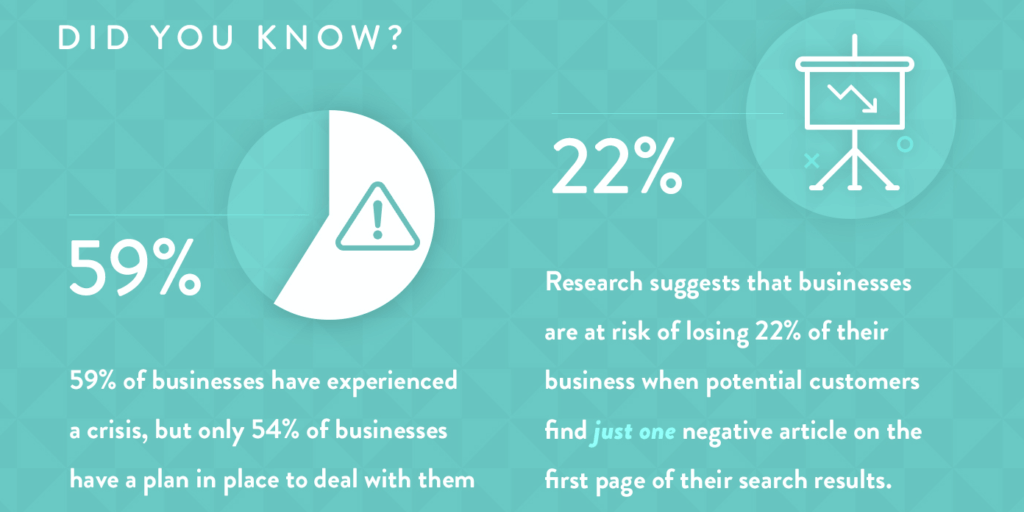
Who is Kanye West?
A musical genius? A passionate campaigner? Jesus? Or a spontaneous, unintelligible twitter ranter?
“I’m telling you, I am Warhol. I am the number one most impactful artist of our generation. I am Shakespeare, in the flesh. Walt Disney. Nike. Google…”
“A lot of people here felt like they lost. You know why? Because y’all been lied to. Google lied to you. Facebook lied to you. Radio lied to you”
“My greatest pain in life is that I will never be able to see myself perform live”
Kanye West is a brilliant example of how impulsive, unplanned communication can ruin a reputation.
But it’s not only famous celebrities that suffer the cost of off-the-cuff comms.
Unplanned communication is costing companies over $37 billion every year. This is no surprise when you consider that over 60% of companies don’t create or follow a communication plan.
It’s time to stop winging it and start planning it.
Read this Process Street post, grab our free communication plan template, and learn how to communicate properly, as we go through the following:
- The basics: What a communication plan is
- Three must-have communication plans
- Why having a communication plan is a no-brainer (with true stories)
- How to build a communication plan with Process Street
If you’re keen to start planning your communication right now, grab this free Communication Plan Template Checklist:
Click here to access the Communication Plan Template Checklist!
(Sign up for a free trial here, if you’re not yet a Process Street user)
The basics: What a communication plan is
A communication plan is exactly what it says it is; it’s a plan for communication. It’s a documented strategy that allows companies to identify what they want to say, and ensure their messages are delivered to the right people, in the right way, at the right time to allow them to meet their organizational goals.
“It’s an end-to-end plan for delivering strategic messages to key audiences in order to drive positive business outcomes” – CoSchedule, Communication Plan Template
In simple terms, the sole purpose of a communication plan is to drive the company towards its goals by planning its communication efforts and establishing:
- What they need to say
- When they need to say it
- Who they need to say it to
- How they need to say it
That’s the basic definition of a communication plan. But, to truly understand what a communication plan is, we need to understand…
What communication is & why it needs to be planned

Communication is the exchange of ideas, messages, or information by speech, signals, or writing. In a business context, communication is the process of sharing information to people, inside and outside of a company, to push the organization towards its goals and objectives.
Get your communication right and you can build your brand, strengthen customer relationships, engage staff, improve your business, and increase sales.
Get your communication wrong and you can damage your reputation, miss opportunities, alienate customers, demotivate employees, and lose sales.
“Without communication, organizations would not function. If communication is diminished or hampered, the entire organization suffers. When communication is thorough, accurate, and timely, the organization tends to be vibrant and effective” – Cliffs Notes, The Significance of Communication
Communication is powerful enough to make or break a company and is, therefore, a vital tool for any organization.
But how do you make sure you get your communication right?
You guessed it; by planning it.
A communication plan enables you to get your key messages out to your audiences, in the right way and at the right time. It’s also a way to make sure your messages are consistent, effective, and closely aligned with organizational goals and objectives.
To emphasize this point, we’ll look at what happens if you don’t plan your communication later, but for now, let’s look at the types of communication you need to plan for.
This might surprise you…
Three must-have communication plans
Do you communicate internally with staff and stakeholders? Do you communicate externally with existing and potential customers? Do you communicate, both internally and externally, during times of change or crisis?
I’m guessing you answered yes to most, if not all, of the above?
If so, it’s imperative that you strategically think about, and create, communication plans for your:
- Internal communications
- Marketing communications
- Crisis communications
Let’s look at each type of communication plan in a little more detail.
Internal communication plan

What is it?
An internal communication plan should establish what you want to say to your employees and stakeholders and confirm how and when to communicate it.
Why is it needed?
Internal communication is the cornerstone of your organization. How you communicate with your staff sets a precedent and cultivates your company culture.
“When a strong employee engagement communication plan is in place, it guarantees staff loyalty, motivation and productivity” – TalkFreely, Internal Communications Plan
Properly planned, and executed, internal communication improves productivity by up to 25%. Whereas poorly planned internal communication undermines employee confidence, elevates stress, reduces productivity, and leads to higher turnover levels.
Marketing communication plan

What is it?
A marketing communication plan (often referred to as a ‘Marcom plan’) is what, how, when, and where you intend to inform your existing and potential customers about your product or service.
Why is it needed?
You might have the best, most innovative product or service in the world. But if you don’t tell the right people about it, at the right time and in the right way, it will never sell.
A clear strategy on what you want to say to your current and potential customers, and how you want to say it, will allow you to create powerful and targeted marketing campaigns. It will help you reach your target market, allow you to build a strong, consistent tone of voice, and enable you to reach your organizational goals and objectives.
Crisis communication plan

What is it?
Crises come when they’re least expected. The last thing you want to think about when trying to manage a crisis, is how, what, who, and when to communicate. A crisis communication plan is a set of pre-established steps, designed to help organizations manage their communications during stressful, panicky, and uncertain times.
Why is it needed?
When an emergency occurs, the need to communicate is immediate. Customers, employees, communities, suppliers, stakeholders, the media, and even the government in some cases, need to know what has happened, when it happened, why it happened, and what the consequences are.
Having a crisis communication plan makes sure the right information reaches the right people in the right way. It guarantees a quick release of information, as well as a consistent message on all company platforms. It’s a proactive way to execute damage control and preserve your brand image.
“If your organization waits until a crisis hits to start planning how to communicate, you’ll likely fail to avoid catastrophe” – Hubspot, 6 Crisis Communication Plans & How to Write Your Own
So, those are the three key types of communication plan that you, as an organization, should have in place.
But, regardless of the type of communication plan you’re creating, the company goals and objectives should always remain the center of focus, and it should always provide answers to the following questions:
- What do you need to say?
- When do you need to say it?
- Who do you need to say it to?
- How do you need to say it?
So, we know what a communication plan is and what types of communication plan to create, now we’re going to hone in on the importance of having one in place.
Why having a communication plan is a no-brainer (with true stories)
Elon Musk. An engineering entrepreneur, investor, philanthropist, and Kanye West’s best mate. This unlikely friendship seems to be fueled by a shared penchant for spurting out thoughts to the world, without warning, and without a well-thought-through plan.
Although Kanye West’s unplanned ramblings are crazy, they are relatively harmless. The damage they’ve caused has mostly been to his own reputation (and marriage).
It’s a different story for his pal, Elon, though.
“Tesla’s biggest issue is poor communication. They continue to lurch from announcement to announcement with a lot of uncertainty” – Paul R. La Monica, CNN Business
As an example, unplanned communication has cost Musk well over $16 billion over the last few years:
- The Tesla share price dropped and he lost $14 billion after he posted an unplanned tweet about Tesla’s stock price being too high
- After he made an unplanned comment about Tesla’s future on the New York stock exchange, the market lost confidence and Tesla’s share price plummeted. This cost him over $20 million
- He lost $2 billion after he launched an unplanned, and completely misguided, attack on a diver who took part in the Thai Cave rescue. After calling it a ‘publicity stunt’, thousands ditched their shares, and the share price took a nose-dive.
Are you starting to see a theme here?
Spontaneous, unplanned communication costs, which is why it pays to have a solid communication plan in place.
Someone needs to pass this piece of advice onto Elon and Kanye, pronto! If only we could show them how to create a solid, effective communication plan.
Well! As it happens…
How to build a communication plan with Process Street
Before we talk about how to create a communication template with Process Street, let me first introduce you.
What is Process Street?
Process Street is superpowered checklists. It’s business process management (BPM) software that allows you to manage your business processes and recurring tasks in one, central place.
Watch the below video, or read this article, to find out a little more.
You can create templates and run individual checklists from those templates, each time you need to complete a recurring task or workflow. You can speed tasks up with automation; assign tasks, set due dates, ask for approval, and connect your processes to the platforms you regularly use (like Word, Google Docs, or Outlook), through Zapier, Webhooks, or API integration.
For more advice, tips, and tricks on how to automate your processes, watch this Process Street webinar:
So that’s what Process Street is. Now, onto the good stuff.
How Process Street can help you create a communication plan
Below is a Communication Plan Template Checklist which the team at Process Street has created, to help you build your own communication plans.
Click here to access the Communication Plan Template Checklist!
As you’ll see when you access it, this template is a base that you can adapt and build upon to create whatever type of communication plan you need.
Whether it’s for internal comms, marketing comms, or crisis comms, this template will help you create a tailored communication plan. It will prompt you to think about the general principles around communication, which include:
- The company’s goals and objectives
- The key messages you want to send, to help you meet the company goals and objectives
- The people you need to communicate these key messages to
- The optimum time to deliver these key messages
- The best way to reach your target audience
You can have this template for free (or sign up for a free trial and get it for free), and edit it, according to the type of communication plan you are creating, using these features:
- Stop tasks
- Dynamic due dates
- Task permissions
- Conditional logic
- Approval tasks
- Embed widget
- Role assignments
- Webhooks
- Task assignments
- Many, many more
Alongside the above Communication Plan Template Checklist, you also have exclusive access to our renowned template library.
Related communication plan checklists
The template library contains hundreds of pre-made templates that you can use, for free, to help you manage any type of process, recurring task, or workflow. From onboarding checklists and to-do-list templates to financial audit checklists and standard operating procedure templates.
Below is a small sample of some of the templates you can find in our library, that might help you with your communication planning:
Content Marketing Workflow Management Checklist Template
Use this template to help you create a content strategy that’s perfectly aligned with your overall business goals.
Click here to access the Content Marketing Workflow Management Checklist Template!
Personalized Marketing Campaign Template
Use this template to create automated, personalized, email campaigns that will help you build strong relationships with your prospective customers.
Click here to access the Personalized Marketing Campaign Template!
HOA Newsletter Template
Use this template to create and distribute a newsletter that is both visually appealing and has interesting, engaging content for your internal or external audiences.
Click here to access the HOA Newsletter Template!
Communication is a big subject and there are thousands of articles, posts, videos, and podcasts out there, waiting for you to dive into and explore.
Related communication plan posts
I’ve included a few of them below, to help get you started.
- 9 Top Workplace Team Chat Apps for Effective Team Communication in 2020
- Confronting an Employee? 11 Communication Mistakes Managers Make
- Digital Democracy: Improving Communication and Trust in Your Business
- How We Use Free Screencasting Apps To Crush Communication At Our Startup
- The Complete Guide to Asynchronous Communication in Remote Teams
- Free Meeting Minutes Template and Top Tips to Effectively Record Your Meeting Minutes
- Increase Your Email Conversion Rates With These 12 Top Tips
- Instagram Marketing Tips for Business: How to Get More Email List Subscribers
- 3 Ways to Repurpose Instagram Content for Your Email Marketing
- 17 Email Marketing Templates For An Effective Email Marketing Strategy
- How To Write Follow Up Emails: Templates, Processes, and Guides
- Best Marketing Automation Software: 10 Tools to Autopilot Marketing Emails
- Operations Manual Templates: How to Create a Solid Operations Manual (Free Templates!)
- How to Use Social Media for Indie Game Marketing: A Beginners Guide
- Social Media Marketing Automation: Top 5 Tools and 7 Free Checklists
- Mobile App Marketing: How to Successfully Build & Execute Your Strategy
- How to Build a Unified Marketing and Customer Service Strategy
- Product Marketing Strategy: The Key to a Successful SaaS Business
- Instagram Marketing Tips for Business: How to Get More Email List Subscribers
- Top Platforms For Solving Communication Issues Of Remote Teams
- Synchronous v. Asynchronous Communication: Which one is better?
- How to Easily Achieve Effective Employee Communication in Your Team
- How To Supercharge Your Remote Team’s Communications
- Zoom vs. Skype: A Comparison of Video Conferencing Platforms
- 5 Reasons Why Your Remote Team Needs to Work Out Loud
Ok, I think I’ve probably communicated enough. It’s now over to you!
Next time you think about communicating an unplanned message, either internally or externally, remember these (surprisingly) wise words, from none other than Kanye West:
“We as human beings don’t always choose the right words…”
So make sure you plan them!

We’d love to hear how you create your communication plans in the comments. Who knows? You may even get featured in an upcoming article!







 Workflows
Workflows Projects
Projects Data Sets
Data Sets Forms
Forms Pages
Pages Automations
Automations Analytics
Analytics Apps
Apps Integrations
Integrations
 Property management
Property management
 Human resources
Human resources
 Customer management
Customer management
 Information technology
Information technology






Amanda Greenwood
Amanda is a content writer for Process Street. Her main mission in life is to write content that makes business processes fun, interesting, and easy to understand. Her background is in marketing and project management, so she has a wealth of experience to draw from, which adds a touch of reality and a whole heap of depth to the content she writes.